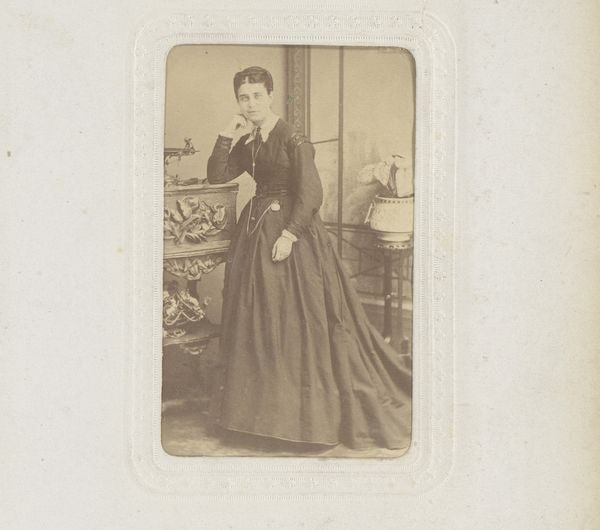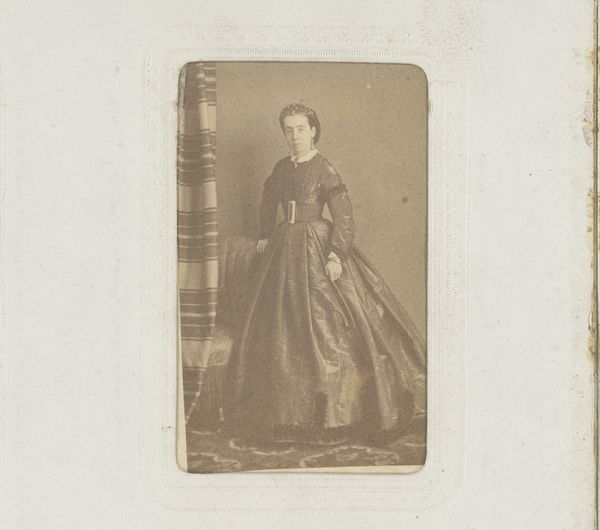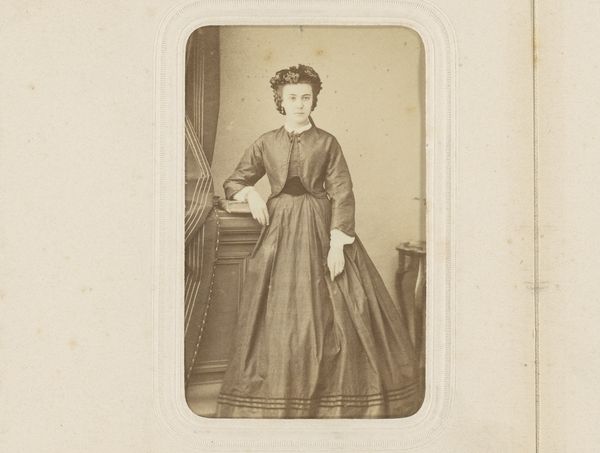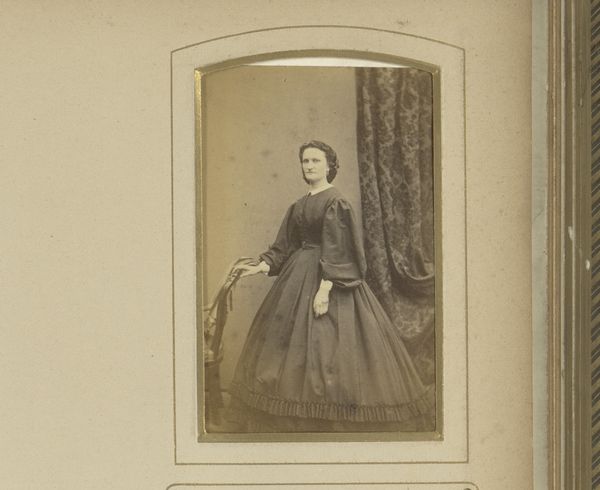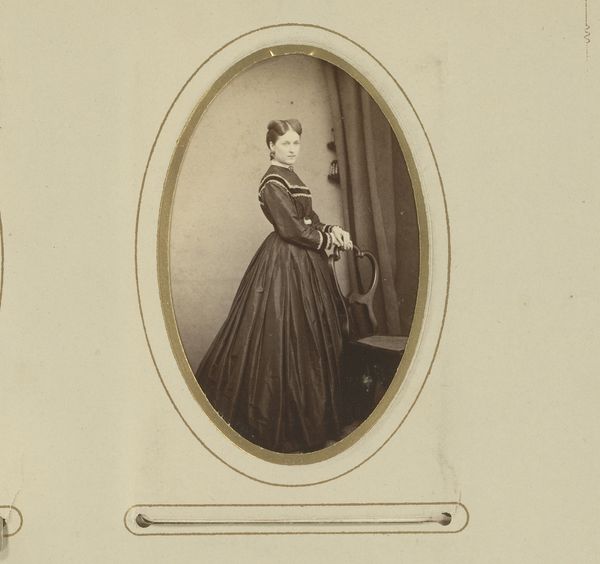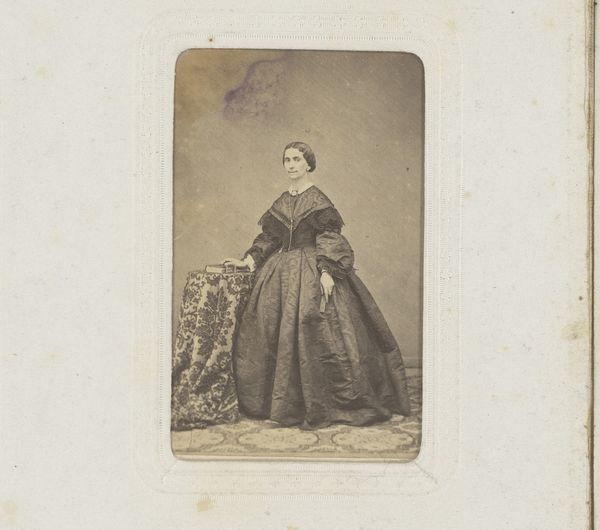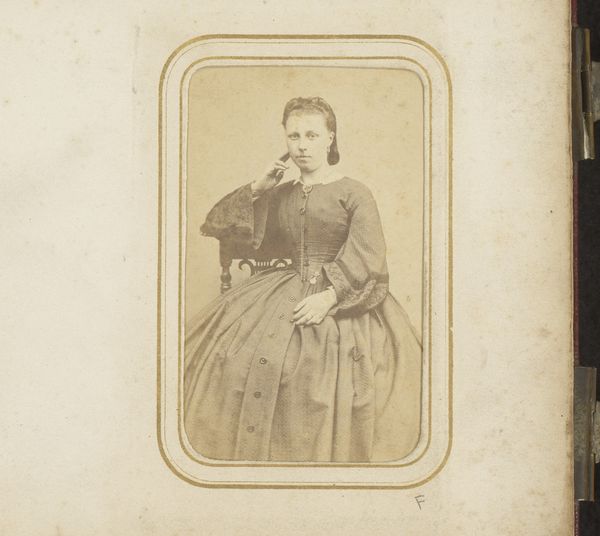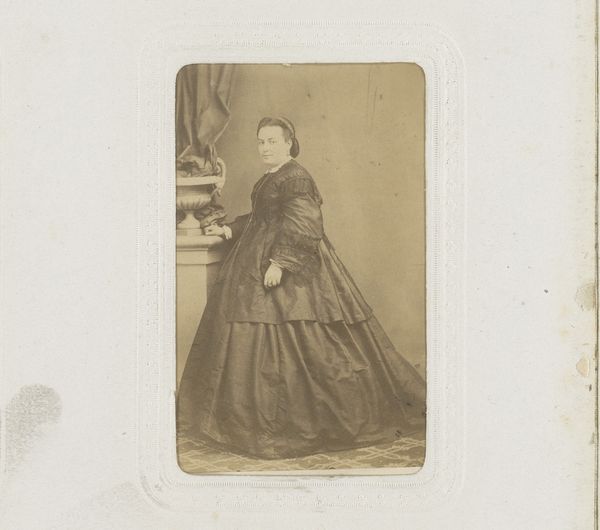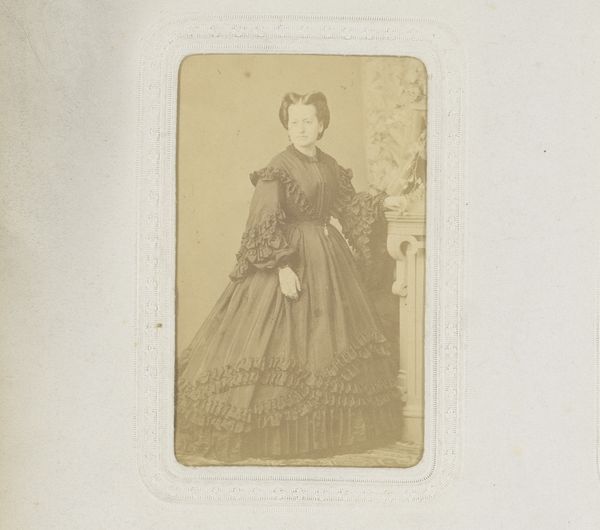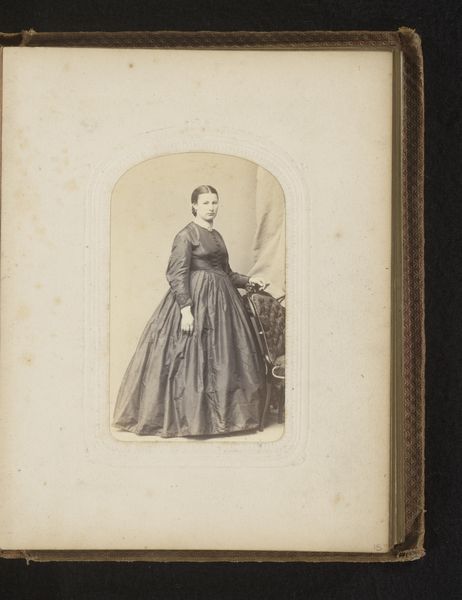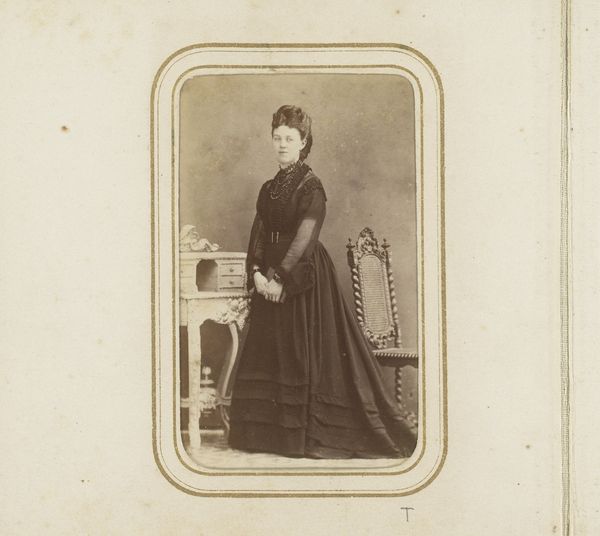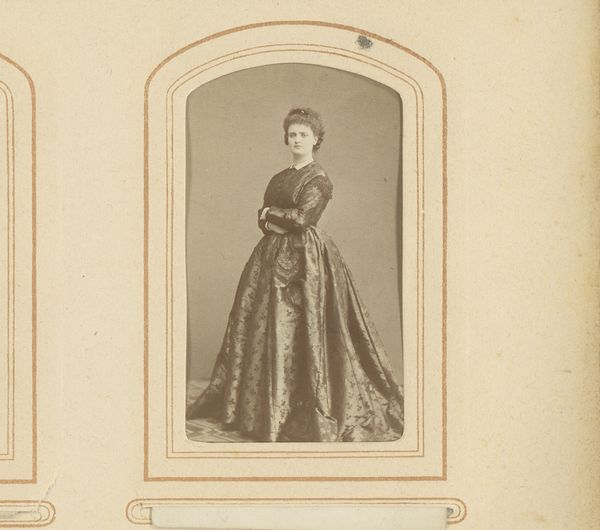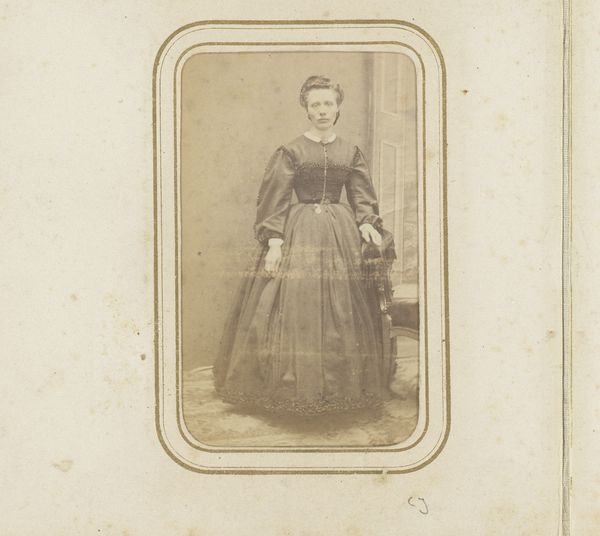
photography
#
portrait
#
photography
#
academic-art
Dimensions: height 86 mm, width 52 mm
Copyright: Rijks Museum: Open Domain
Curator: Standing before us is an image by Leon Bravy entitled "Portret van een staande vrouw," dating from 1860 to 1890, crafted through the then-modern medium of photography. What catches your eye initially? Editor: The pose is very studied and conveys an air of formal restraint, despite the evident wealth suggested by her gown. There's a slight disconnect between the subject’s somber affect and the elaborate context in which she has been placed. Curator: The ambrotype process, being relatively new, required long exposure times. That undoubtedly played a role in her static pose, also it’s an interesting juxtaposition between this emergent medium, and the historical and economic weight that her dress implies. Editor: Absolutely. Considering the labor and cost of creating a dress like that during this period situates the sitter within a specific social hierarchy. Who produced this fabric? Under what conditions? Her identity becomes inseparable from global trade networks and social inequalities of the time. Curator: Exactly. Also thinking about the dress’s very material construction and wear – the seams, the dye used for the print – offers access to understanding dress-making at the time. Photography immortalized, and in some ways, fetishized these sartorial objects and associated processes. It both captured a moment and also served as propaganda for the Victorian ideal of domestic elegance. Editor: I agree. Furthermore, the very act of portraying this woman, arguably frozen in this single representation for the consumption of present and future viewers, raises interesting feminist questions concerning power and representation. Is this her own self-fashioning, or is she being molded by a male gaze, even with a name like Bravy? How complicit or subversive can one be within the confines of such a staged, bourgeois portrait? Curator: Well put. I wonder if this photograph was part of a series or study. The repetition of similar poses among bourgeois women during that period begs questions about what they wanted these photographs to signify about them, given that their lives were restricted. Editor: In the end, both the artistic decisions and their sociopolitical backdrop open intriguing avenues to understand female agency, labor history, and the emergence of photography as an industrial practice during a pivotal moment of modernity. Curator: It highlights, doesn’t it, the complex interaction between technological advances and evolving perceptions of gender and class.
Comments
No comments
Be the first to comment and join the conversation on the ultimate creative platform.

